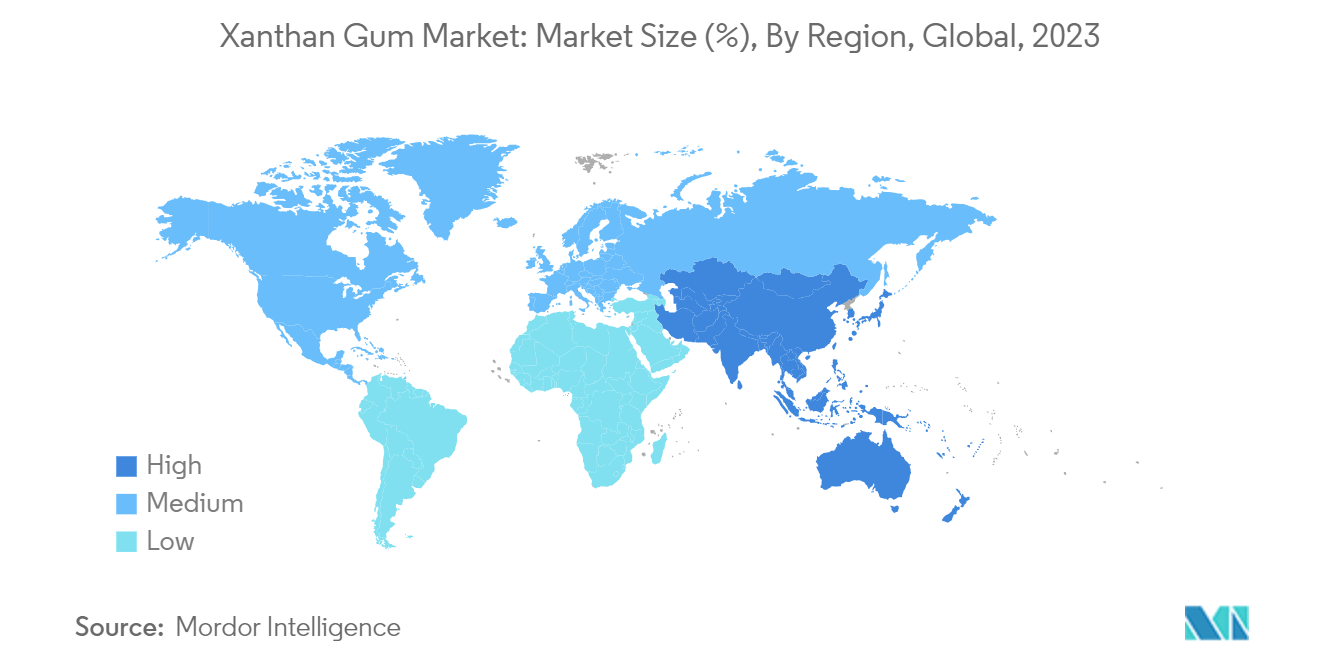Market Trends of Xanthan Gum Industry
Food and Beverage Industry is the Biggest Consumer of Xanthan Gum
Xanthan gum claims to improve the texture of bakery products and prevent them from becoming crumbly and dry. As it also helps retain moisture and enhance overall shelf life and acceptability, the increasing consumption of bakery products drives the use of xanthan gum. Furthermore, due to the growing demand for sugar-free and gluten-free chocolates, manufacturers use xanthan gum as a replacement for gluten because of its elasticity and structure in recipes lacking traditional gluten-containing ingredients. Over the medium term, the market is anticipated to expand with the rising need for healthy and functional confectionery products. The import-export of raw meat products is also increasing worldwide due to the increasing production of various meat products and rising demand for processed meat. Therefore, the demand for xanthan gum is growing as it is used as a thickening, suspending, stabilizing, and emulsifying agent in meat products. It can be used in ham, luncheon meat, red sausage, and other minced meat products to improve the water-holding capacity and tenderness.

Asia-Pacific Dominates the Market
Asia Pacific holds the largest market share and will continue to dominate due to the rapid expansion of the food and beverage sector. Also, urbanization, rising standard of living, expansion of retail stores, and supportive economic factors are projected to boost market growth. For instance, the Chinese economy is growing significantly, and the rapid urbanization and income growth contribute to diversifying the Chinese diet and creating a demand for high-value products like gluten-free, thereby increasing the demand for xanthan gum. In addition, increased investments and exploration projects initiated by governments of several countries across the region fuel the market. For instance, in July 2022, the United Arab Emirates announced its plans to invest USD 2 billion to set up food parks across India. Further, rising consumer inclination toward healthier lifestyles and increasing awareness about quality food ingredients are spurring demand for food additives such as xanthan gums in the region.


